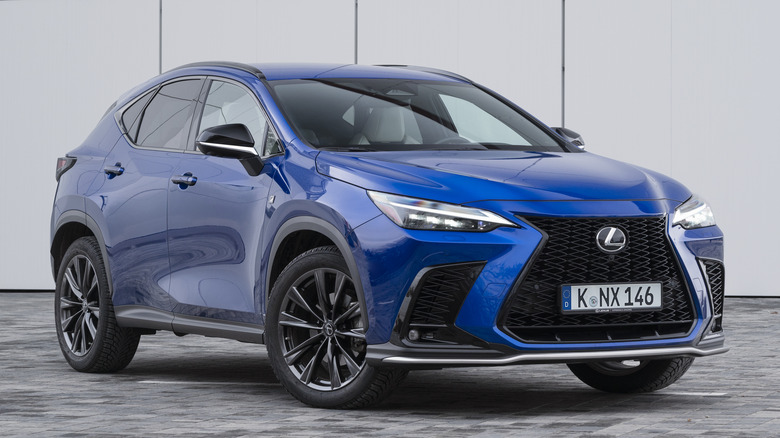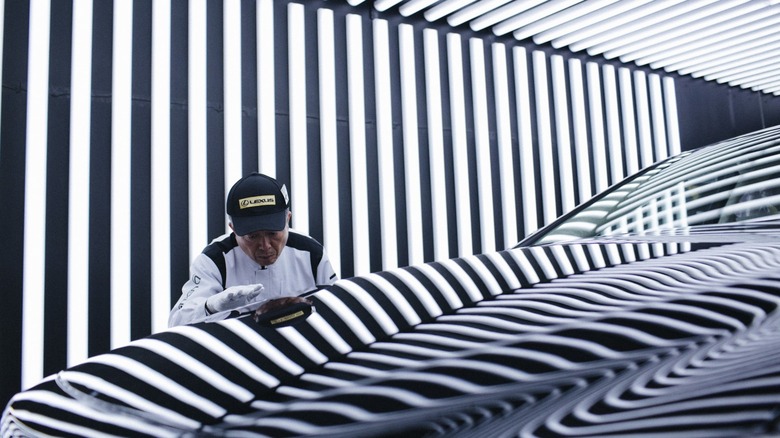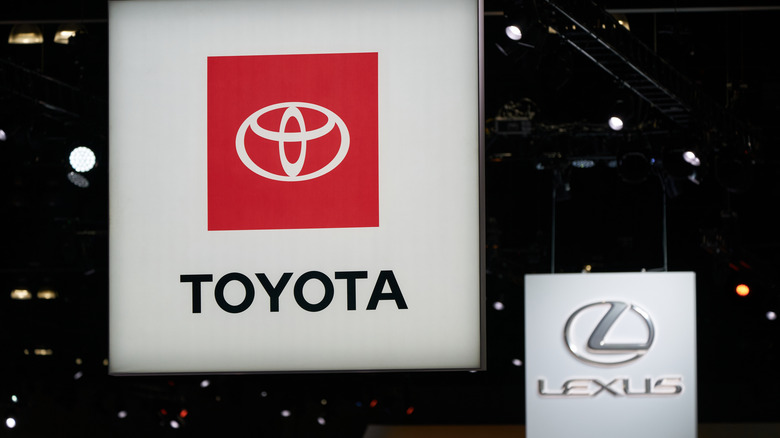Who Owns Lexus, And Is It The Same As Toyota?
When the first Lexus model washed up on American shores in 1989, one of the big knocks was that it was just a gussied up version of a Toyota slapped with a higher manufacturer's suggested retail price.
Much in the same way that Infiniti is related to Nissan, and Acura to Honda, Lexus sits under the larger corporate entity that is Toyota Motor Corporation, which consistently sits atop the list of world's largest automakers. So yes, Toyota started and still owns the luxury vehicle division, but the cars each build are very different animals.
The story of Lexus starts in 1983, when Toyota's president Eiji Toyoda issued a challenge to build "a car that is better than the best in the world." A team of designers and engineers were assembled on this secret project known as "Circle F" (where the "F" stood for Flagship). It was also known as Flagship One (F1). While it was their directive to reimagine a luxury car, launching a new luxury division wasn't their goal.
In 1985, the team gathered in Laguna Beach, California's small but wealthy beachside community. Only after leaving the opulence of Laguna Beach, seeing a mix of what they say as "luxury and peak performance," did they compare notes and realize they did, in fact, need to start a new luxury line of cars, complete with a separate identity with an entirely different structure.
Lexus is all about the touch and feel
The main hurdle facing Toyota was shifting consumer perceptions about Japanese-made cars — which, prior to Lexus, were regarded as durable, reliable, and economical, but certainly not luxurious. Toyota dove deep into its culture and drew on the Japanese traditions of omotenashi hospitality and takumi craftsmanship to build all of the vehicles that would come from the Lexus brand.
Omotenashi is the traditional tea ceremony where the steaming beverage is made right in front of the person. The first part of the word, "Omote," means the visible side of an object or the image someone wants to present to the public. "Nashi" too has several meanings, one of which is "without" or "nothing." Omotenashi then means genuinely taking care of the guest without expectations.
Takumi are master craftsmen in Japan respected for their keen eyes and sense of touch, capable of finding flaws (apparently "down to fractions of a millimeter") when machines can not. Takumi inspect cars at every stage of production, making more than 800 individual checks. For instance, after the body has been stamped and welded, a Takumi goes over it to ensure everything is aligned perfectly just by looking at and touching the pieces.
Its first flagship automobile, the Lexus LS 400 — still regarded as one of the most reliable models ever built — had to be not only the finest sedan Toyota ever made, but also the most obsessively crafted luxury car the world had ever seen. Development on the LS 400 began six years before it was unveiled in January 1989 at the North American Integrational Auto Show in Detroit.
One is not like the other
A team of 60 designers, 1,400 engineers, and 2,300 technicians built some 450 prototypes and test-drove them 2.7 million miles to ensure that each and everyone adhered to these exact specifications. The brand-new 4.0-liter V8 (the 1UZ-FE engine, one of the five most reliable engines Lexus ever built) and rear-wheel drive found in the LS 400 shared nothing with any of Toyota's other vehicles at the time.
The brand's badge is the Greek "lexicon" (meaning "language"), while the name is a combination of the Latin word "luxus" and the French word "luxe" to epitomize elegance and sumptuousness. Despite the rumor that the name stands for "Luxury Export To The United States" (or some such thing), the Lexus advertising division long ago said that's not true.
Today, the two may share some of the platforms and components with each other (i.e. Toyota's 2021 Land Cruiser Prado shares the same platform as the '21 Lexus GX460), and some Lexus models are indeed built in Toyota factories (both here and in Japan). Still, the two remain separate brands and companies.
While both companies offer incredibly durable and reliable vehicles, Lexus is — as one might expect — fitted with higher-end components and features like leather interior, better audio systems, etc. It all boils down to how much you want to pay and exactly what kind of ride you're looking for.


